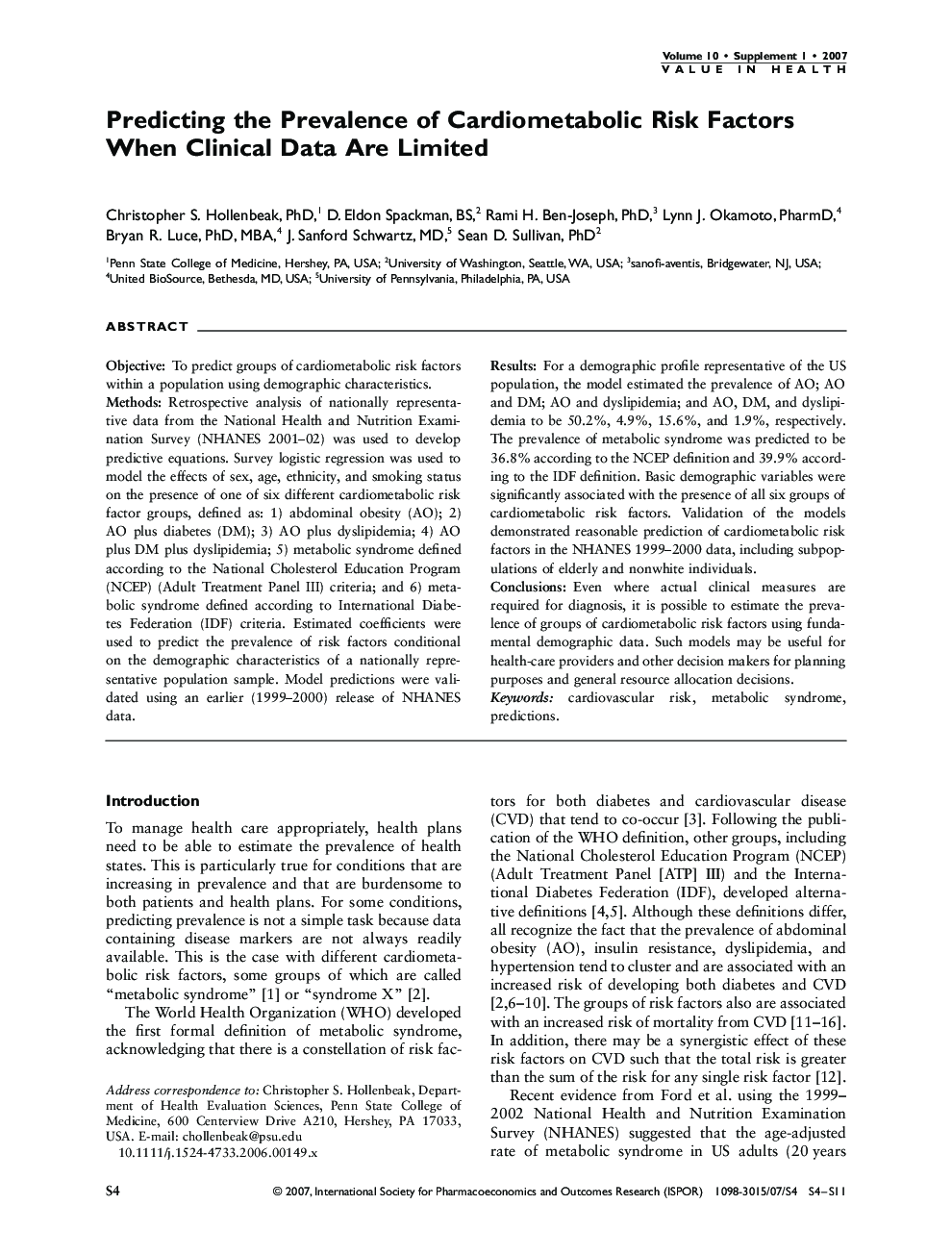| کد مقاله | کد نشریه | سال انتشار | مقاله انگلیسی | نسخه تمام متن |
|---|---|---|---|---|
| 988137 | 935224 | 2007 | 8 صفحه PDF | دانلود رایگان |

ObjectiveTo predict groups of cardiometabolic risk factors within a population using demographic characteristics.MethodsRetrospective analysis of nationally representative data from the National Health and Nutrition Examination Survey (NHANES 2001–02) was used to develop predictive equations. Survey logistic regression was used to model the effects of sex, age, ethnicity, and smoking status on the presence of one of six different cardiometabolic risk factor groups, defined as: 1) abdominal obesity (AO); 2) AO plus diabetes (DM); 3) AO plus dyslipidemia; 4) AO plus DM plus dyslipidemia; 5) metabolic syndrome defined according to the National Cholesterol Education Program (NCEP) (Adult Treatment Panel III) criteria; and 6) metabolic syndrome defined according to International Diabetes Federation (IDF) criteria. Estimated coefficients were used to predict the prevalence of risk factors conditional on the demographic characteristics of a nationally representative population sample. Model predictions were validated using an earlier (1999–2000) release of NHANES data.ResultsFor a demographic profile representative of the US population, the model estimated the prevalence of AO; AO and DM; AO and dyslipidemia; and AO, DM, and dyslipidemia to be 50.2%, 4.9%, 15.6%, and 1.9%, respectively. The prevalence of metabolic syndrome was predicted to be 36.8% according to the NCEP definition and 39.9% according to the IDF definition. Basic demographic variables were significantly associated with the presence of all six groups of cardiometabolic risk factors. Validation of the models demonstrated reasonable prediction of cardiometabolic risk factors in the NHANES 1999–2000 data, including subpopulations of elderly and nonwhite individuals.ConclusionsEven where actual clinical measures are required for diagnosis, it is possible to estimate the prevalence of groups of cardiometabolic risk factors using fundamental demographic data. Such models may be useful for health-care providers and other decision makers for planning purposes and general resource allocation decisions.
Journal: Value in Health - Volume 10, Supplement 1, January–February 2007, Pages S4-S11